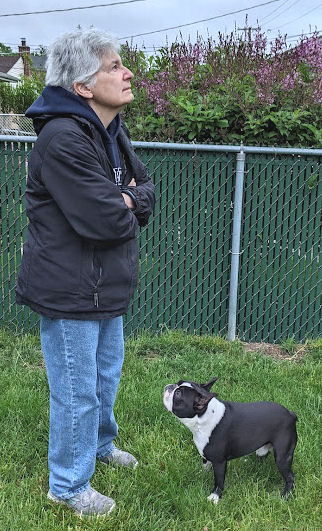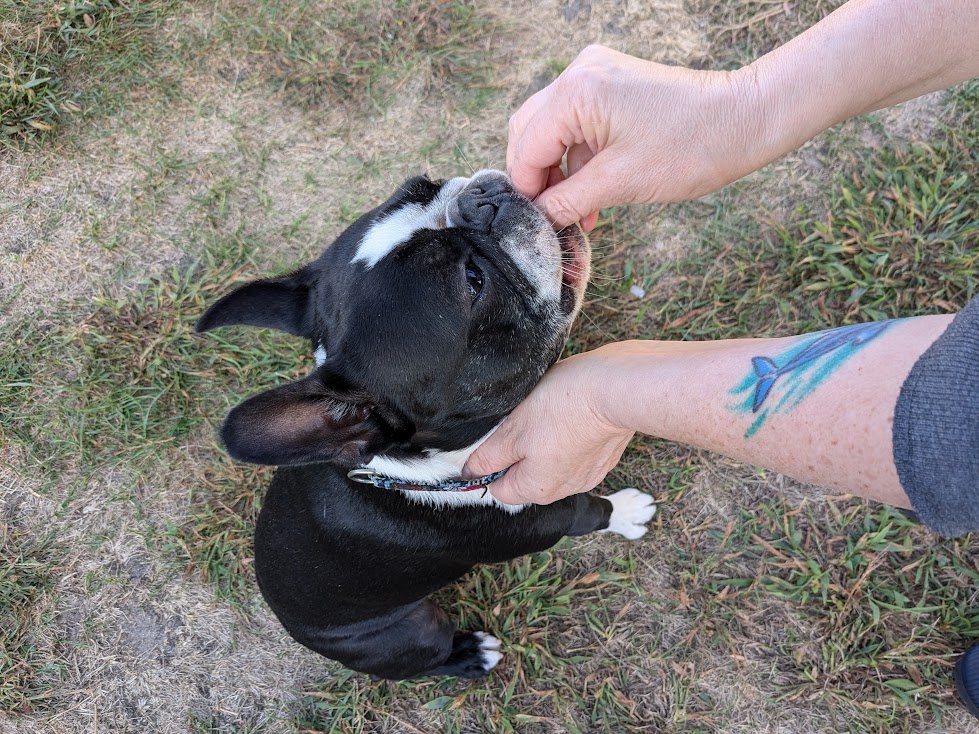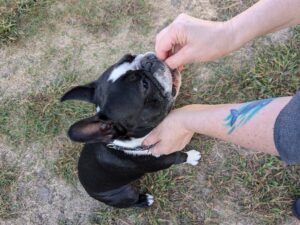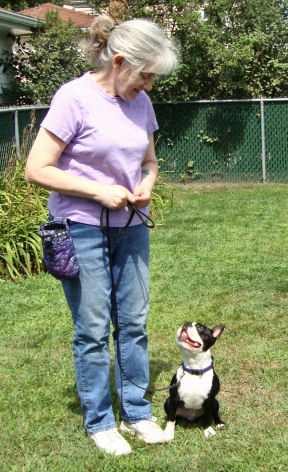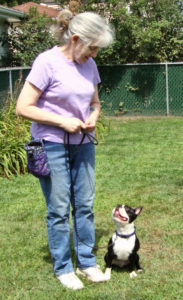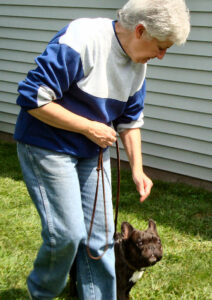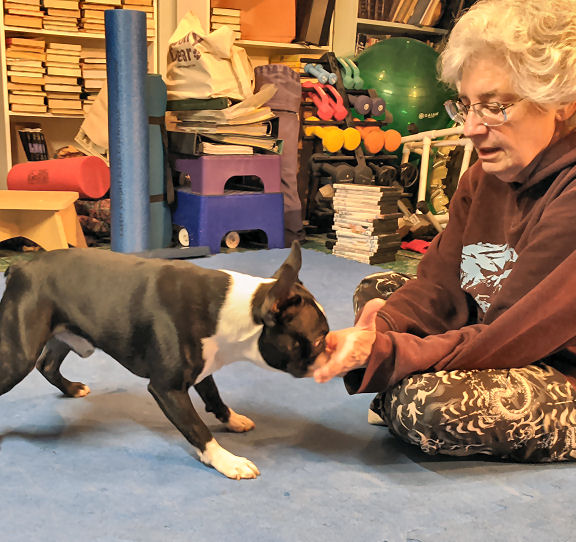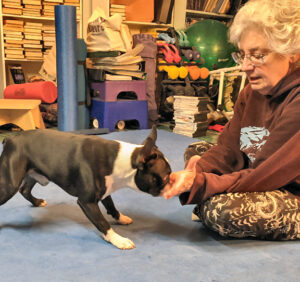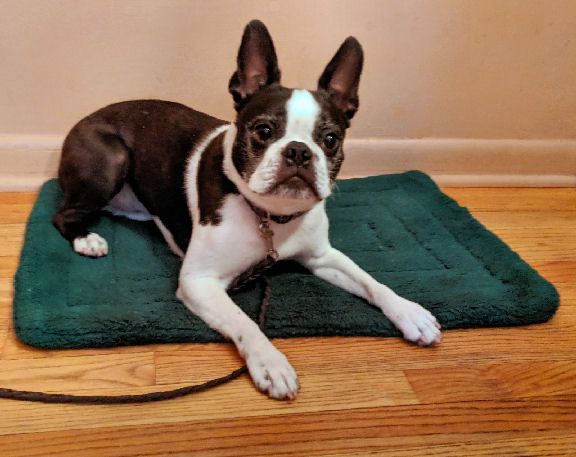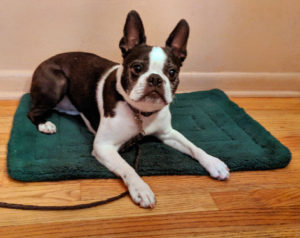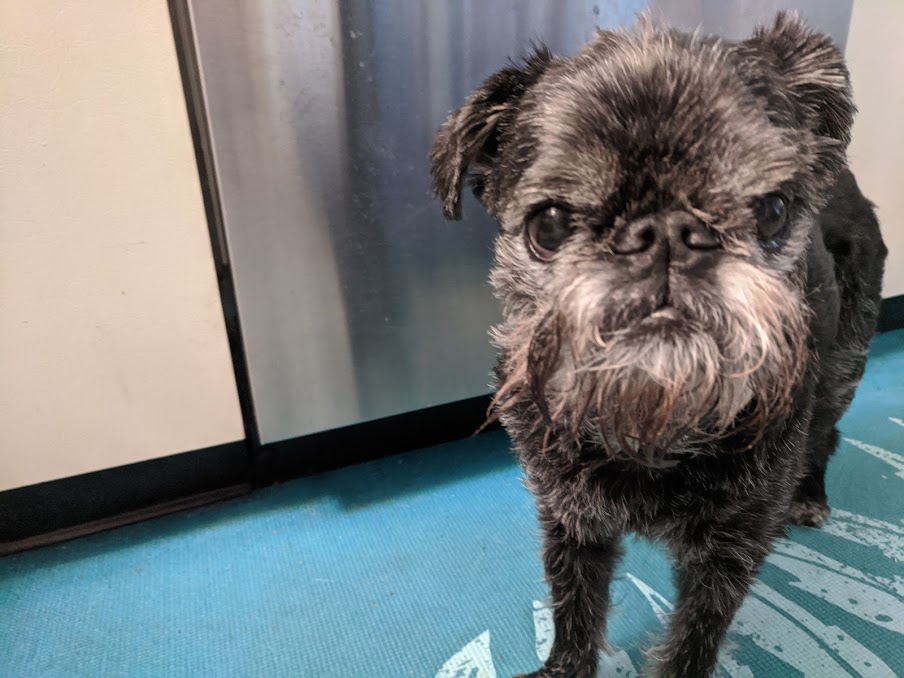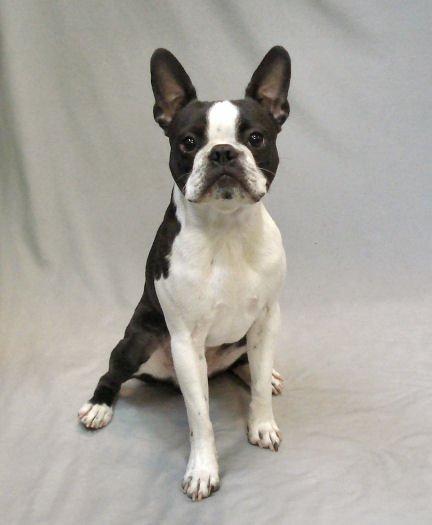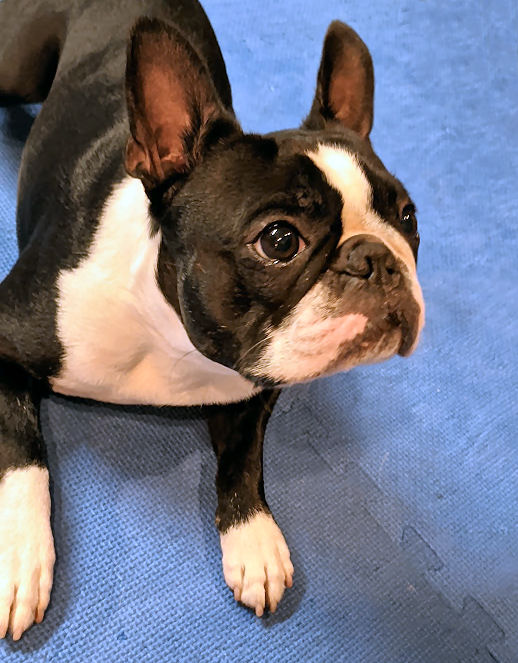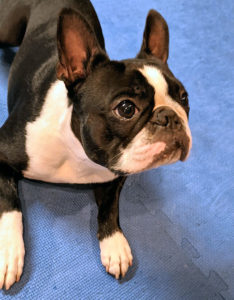“Off!” Is the word you’ll use for everything from jumping on people to counter-surfing. The actual meaning of the word “Off!” for your dog will be “four paws on the floor.” That’s too much of a mouthful for you to spit out automatically when you need it.
It also may require that you do some practicing and retraining yourself. You know dogs can only assign one meaning per word. So if you’re saying “Down!” when your dog is up on something (or someone), stop it. “Down!” means lie down. It can’t mean both.
Clear as mud
Like all behavior modification games, you have to set up the scenario. It’s not impossible to train dogs on the fly, but it’s difficult and unclear. If you’re trying to teach “Off!” when guests are arriving for a party, it’s not going to work. You’ll be distracted, not focused on training your dog. It’s just not the time, so don’t waste your breath and effort. Just put your dog on leash and manage the situation.
Devote some 2-Minute Dog Training sessions to the “Off!” Game prior to that party, if there’s time. It’s pretty easy and most dogs catch on quickly.
How to play
Get some incredibly yummy treats your dog can’t resist. This is the time to pull out the hot dogs, or cheese. Start by pulling out a chair or stool that your dog has to get on hind legs to reach the seat. Pile a bunch of those yummy treats in the middle of the seat, covered with your hand. Make it the hand farther from the dog that’s doing the covering.
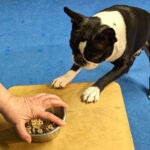
If the treats are tempting enough, your dog will jump and put front paws on the seat. Don’t say anything. Don’t do anything. This is where you have to be patient. When your dog can’t get to the treats, they’ll eventually drop down with all four feet on the floor. Say “Good Off!” and give the dog one of the treats from under your hand. Keep one hand covering the treats and use the other hand to reward the dog. It has to be the dog’s decision to get “Off!” the chair. Remember that “Off!” means four paws on the floor.
If you intervene and always tell your dog what to do when they misbehave, you’ll always have to. It takes time and patience to teach your dog to make good decisions. It’s worth it. Actually letting the dog decide to be “good” will last a lifetime. As opposed to saying “Off!” endlessly and hauling on the dog’s collar every time somebody comes over for the rest of the dog’s life.
Set up the game
It won’t take long before your dog knows they’re being “set up” when you pile treats on that chair. Dogs are pretty smart that way. When your dog just sits and looks at you when you put those treats on the chair, it’s time to change the game.
If your dog is tall enough to reach a table or counter, play the game the same way in those places. Or put the treats in a bowl on the chair. Move the chair into a different room. Change the scenario so the dog understands that “Off!” is always “four on the floor.”
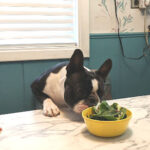
If counter-surfing is an issue in your house, set up your “Off!” Game to mimic when that happens. If your dog tries to “help” when you’re at the counter preparing food, set up the scene. Have some treats handy and get out your cutting board, cutlery, etc. Cut up some food. If your dog’s paws get on the counter, stop what you’re doing, cover up the prep area by shielding it with your arms and torso. Don’t say anything. Don’t do anything. Wait for your dog to get “Off!” When they do, reward immediately and use that word: “That’s Off!” “Good Off!” “I like your Off!”
Most people say “Good Boy!” Or “Good Girl!” It’s nice, your dog likes it, but it’s not teaching them the word you want them to know. Try to remember to use the word you’re teaching.
Grow the behavior
If jumping on people is your dog’s issue, you’ll need a volunteer to help you teach this expansion of “Off!” Set up the situation where your dog usually jumps on a person, and re-create it with your volunteer.
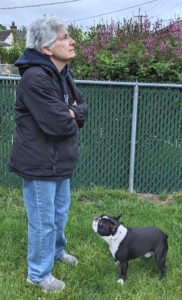
You stand by, ready with those yummy treats. When the dog jumps up on the person, have them stop moving, cross their arms at their chest, and stare at the ceiling. Again, don’t either of you say anything, or do anything. Just be still. When the dog gets all four paws on the floor, you and your volunteer can start petting and talking to the dog, remembering to say “Good Off!” This is often sufficient reward – the dog was asking for attention. You can also give a treat for “Off!”
Most dogs will jump right back up on the person as soon as that person moves. Your volunteer should immediately go into statue mode – arms folded, staring at the ceiling. How many times? As many as it takes to convey the message to the dog. Or until that training session’s time is up. How long it takes will vary widely from dog to dog. Some get it right away. Others have to be convinced over time.
Be consistent: “Off!” means four paws on the floor every time
Lots of people like to teach their dog to jump up on them when asked. They’ll pat their chest and say “Up! Up!” That’s perfectly fine. It doesn’t interfere with learning “Off!” because it’s a trained, invited behavior. It may actually help the dog understand the difference.
If “Off!” means four paws on the floor, don’t ask for more than that. Your dog doesn’t have to “Sit!” as part of “Off!” Acknowledge and reward the “Off!” before moving on to other commands. Reward good decisions as your dog makes them. You’ll discover it leads to more and more of those good choices.

